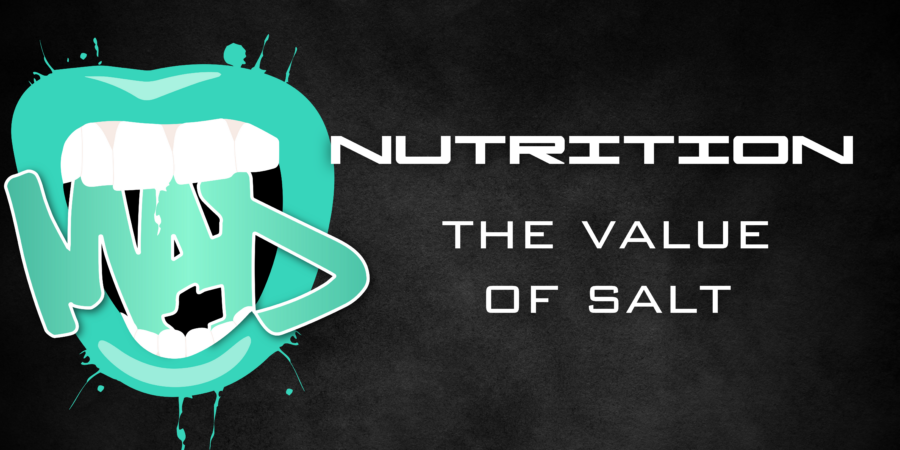Ahhhh nutrition…it’s a fickle bitch, huh? Or is it? On second thought…should healthy eating be THAT difficult of a practice to grasp? Unfortunately, as dietary trends have evolved over the years, people find themselves lost in a sea of conflicting ideologies. Fat is the devil, eat carbs instead. Carbs are the devil, so throw a stick of butter into your morning mug of coffee. Eat protein, but not too much. Eat protein, and nothing else. Grains suck. Grains don’t suck. Track your food intake. Actually don’t, just eat intuitively.
“What in the literal f*** am I supposed to do?!?”
We hear you. It’s frustrating. But with many different nutritional schools of thought out there, we are happy to report that not one size fits all. There are many different approaches you can take to reach your goals. Identifying the right approach for you is simply a matter of assessing what those goals are and what the most practical and sustainable method will be to reach them. Your activity level, current body composition, and – this is often overlooked – behavioral disposition will also largely dictate what’s right for you.
We’ve rounded up the diets we’re most frequently seeing in the nutrition space to offer you our perspective on the pros and cons of each. Our goal here is not to confuse you more; rather, we’re more interested in demonstrating nutritional versatility. Dietary choices are completely situational, and just because your neighbor is a hardcore paleo junkie and you like to track macros doesn’t mean one of you is “right” and one of you is “wrong.”
Now…onto the good stuff:
The Paleo Diet:
Since we already threw it out there, let’s just start with one of today’s most popular diets. There are many variations of the paleo diet – some stricter than others – but the gist of it entails eating as our paleolithic ancestors did. No: grains, legumes, dairy, refined sugar, alcohol. Plenty of: vegetables, fruit, animal protein, and healthy fats from oils, avocado, nuts, seeds, coconut, etc.), animal protein.
Pros:
It is an excellent elimination diet. By removing potentially problematic food groups for a period of time (usually the 30-day mark does the trick), you’re able to more closely pinpoint foods that you may not tolerate well upon reintroduction. Following a strict 30-day paleo protocol may also serve as a nice reset to get back to the basics of eating real, whole foods when you feel you may have been a little too loose in your dietary choices for a prolonged period of time (hence why everyone and their brother jumps on the Whole 30 bandwagon on January 1). Past elimination and resetting, paleo diets have additionally done wonders for those with severe allergies, digestive issues, and over-/under-active thyroids (celiac, auto-immune deficiencies, Crohn’s, Hashimoto’s, etc.). Finally, the paleo diet does well to support eating sustainably-soured, local, and seasonal food…something we at MADabolic very much encourage.
Cons:
Since we’re in the business of everyday strength and athleticism, the primary thing we’ll point out is potential for decline in performance when abiding by paleo law. Since the rise in paleo popularity, the diet has seemingly also taken on a “high fat, low carb” life. Dietary fat, while crucial in a healthy diet, is very easy to over-consume, and consuming too much fat in line with intense training may impede recovery, muscle development, body composition goals, and more. On the flip side, even though they have become demonized over the years (in fact, they flat out scare the shit out of many paleo followers), carbohydrates are also crucial in a healthy diet. From a performance standpoint, carbs are necessary to promote recovery and muscle development and feed the glycogen tank that carries you through your training – and we’re not talking about carrots. No matter how “fat-adapted” you are, the majority of people will need to burn carbs if your doing intense bouts of strength and conditioning. So it’s not necessarily the food sources that could negatively impact performance when it comes to paleo; rather, it’s the skewed and dogmatic logic of “fat good, carbs bad.”
The Ketogenic Diet:
Taking the “high fat, low carb” ideology to the next level is the ketogenic diet, which promotes very high fat, moderate protein, and very low carb intake. When you completely strip carbs from your diet, your body produces ketones (from the breakdown of fats in the liver) and allows it to run purely on fat as its energy source. A typical ketogenic macronutrient split looks something like: 70% fat, 25% protein, 5% carbs.
Pros:
Keto can be highly effective for those with significant body fat to lose. The lower your carb intake in tandem with such plentiful fat intake, the quicker the fat loss. It may also be a good option for those who lead a more sedentary lifestyle or who don’t regularly strength train. Furthermore, ketogenic diets have proven to be successful when prescribed to those who suffer from epilepsy, type II diabetes, irregular cholesterol and blood pressure levels, and other medical deficiencies.
Cons:
Well, naturally, we’ll point you back to the performance-related cons we outlined in the paleo diet. The negative impacts of a ketogenic diet on performance could be even more drastic. In line with an intense strength and conditioning routine, a ketogenic diet may not provide the high rate of energy production necessary for optimal performance. Feeling sluggish, perpetually sore, and “fluffy” are common training-related keto side effects, simply by nature of not fueling the demands of your workouts. Keto can also be difficult to sustain. While fat loss may be initially rapid, the restrictions are hard to cling to in the long-run. And while it might be easy to get in all those delicious fats, it takes some serious thought and preparation to curb your net carb intake to 5% or less (for most, this is no more than 20-30 grams of carbs…some even shoot for <15g). Forget about grains and potatoes, this intake is so low that individuals even need to beware of eating too many vegetables (which [rightfully] feels counter-intuitive given the micro-nutrient rich properties of vegetable consumption).
Gluten-Free Diets:
Exactly as it sounds, people who “go gluten-free” choose to remove any grains containing the gluten protein. Over the years, gluten-free diets have gone from “what the hell is that?” to not being able to step inside a restaurant without seeing a separate gluten-free menu. Basically, it’s trendy AF.
Pros:
It’s trendy AF for a reason. Gluten intolerances are prominent, and not everybody can tolerate this controversial little protein well. For those with celiac disease (an auto-immune disorder in which gluten causes the body to attack the small intestine), “gluten-free” isn’t a dietary choice, it’s a prescribed treatment. So for those with gluten sensitivities and allergies, eliminating it relieves the associated side effects of bloating, abdominal pain, chronic diarrhea, uninvited weight loss, and fatigue. Going gluten-free isn’t synonymous with “low-carb” either, so if fueling performance and muscle development is a goal of yours, there are a variety of healthy, carb-rich, gluten-free options!
Cons:
Less than 1% of the population suffers from celiac disease. And about .5-6% of the population are non-celiac gluten-sensitive. This leaves quite a large portion of people who can tolerate the grain-based protein just fine, yet you can barely turn a corner these days without hearing about how so-and-so is gluten-free. In fact, if you tolerate gluten, you can enjoy incorporating it into your diet healthfully! The reality is, a gluten-free diet applied to someone who eliminates gluten “just because” offers no special health benefits. Contrary to current practice, it’s not a nutritional boogieman. Ironically, many gluten-free foods are less nutritious, higher in carbohydrate fillers, and lower in fiber than their gluten-containing counterparts. Let’s be clear, a gluten-free cookie from Whole Foods is still a cookie. Slapping the “gluten-free” label on there – while a smart marketing tactic – doesn’t make it a healthy choice. Oh, and another fun fact…gluten-free foods are about 250% more expensive than their gluten-containing counterparts. So if you’re gluten-tolerant (which, statistically, most of you are), enjoy that lower grocery bill!
Macronutrient Tracking:
Macronutrient tracking is just that….tracking the consumption of the three main macros – protein, carbohydrates, and fat – in line with a goal ratio specific to the individual. So long as you hit the right balance of protein, carbs, and fat, you enjoy a less restrictive diet, can reach targeted goals, and remove the guesswork of “how much (or little) is too much (or little)?”
Pros:
Tracking macros enables you to understand exactly how what you eat impacts your body, which can be useful in grasping and channeling changes in body composition and/or performance. It also emphasizes the importance of all three macronutrients, as opposed to banishing any of them. This freedom allows macro followers to incorporate an optimal balance of nutrients into their diet without feeling restricted from a food that may be off-limits on another diet (which oftentimes leads to binges on those “NO” foods). Once you have a prescribed macro split in hand (best you receive this from a qualified nutritionist or dietician as opposed to some online calculator), you can also rest easy knowing that these numbers are specific to YOU and YOUR goals. Finally, for those interested in maximizing performance and muscle development, you can manipulate your macro splits further to ensure an optimal balance of nutrients per meal to better support your training routine.
Cons:
Oftentimes, you hear people refer this style of eating as “flexible dieting” – meaning as long as you hit your numbers, you can source your food however you’d like. Some users interpret this as a free-for-all and may end up missing vital micronutrients because they opted to get 40g of carbs from a handful of sour patch kids as opposed to a sweet potato. This interpretation is a little too loosey-goosey for our taste, as we encourage macro-focused diets when sourcing your food primarily from more nutrient-dense options. Another challenge to macros is its meticulous nature. It calls for close attention to not only the food you eat, but to the quantity of each macro composing each meal. While many enjoy this practice and find it freeing and sustainable, it runs the risk of triggering obsessive behavior in others (so for those with hyper-focused tendencies, who become easily stressed, or who may have history with disordered eating patterns, it may not be the best option).
Everyone is different, and depending on your goals and personality, what works for someone else may not work for you! Our nutritional leaning simply points towards a diet rich in nutrients and color, ethically-sourced protein, and high quality supplementation (such as Stronger Faster Healthier’s Omega-3 fish oil and whey protein) – principles that we believe may fit into any lifestyle. At the end of the day, we see the value in each of the aforementioned diets; however, if you are hesitant or unsure about what may be the best fit for you, consider checking in with a trusted and credentialed nutritional professional.



